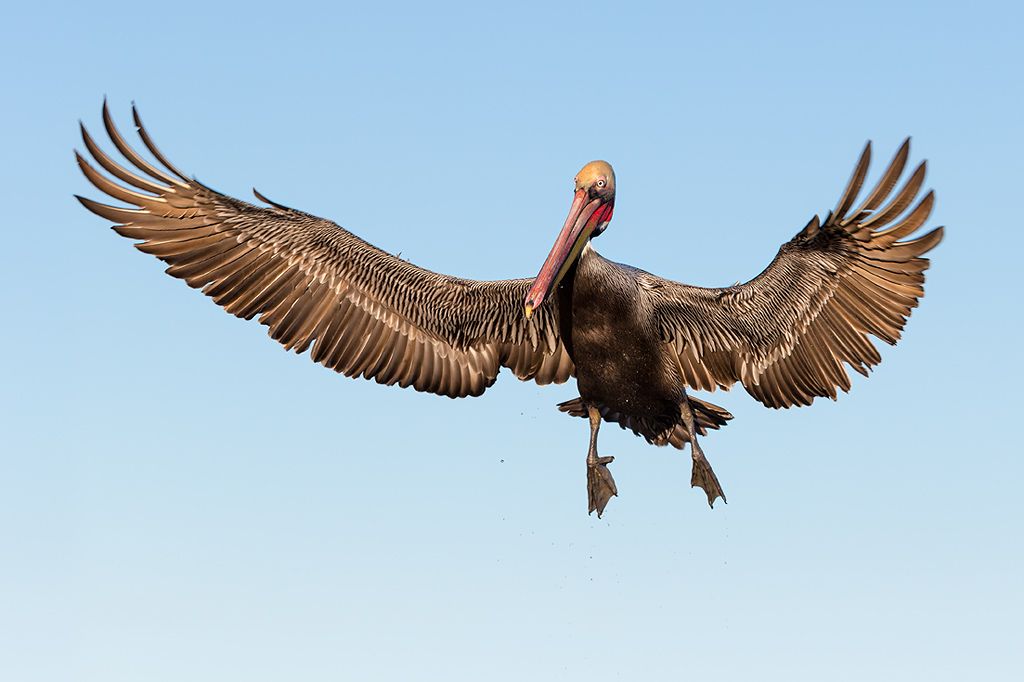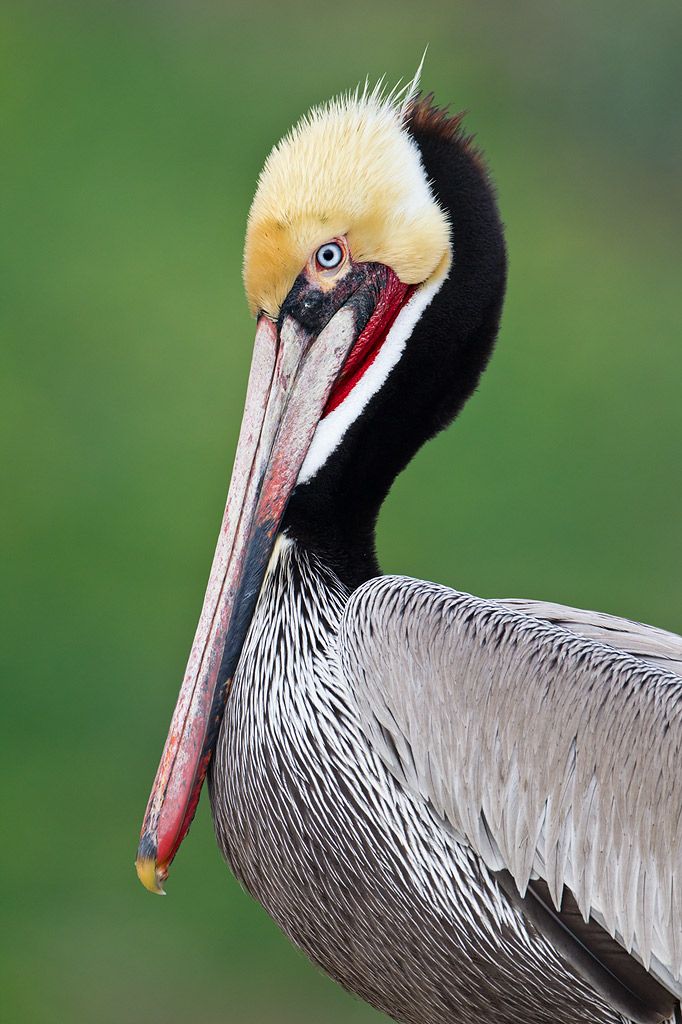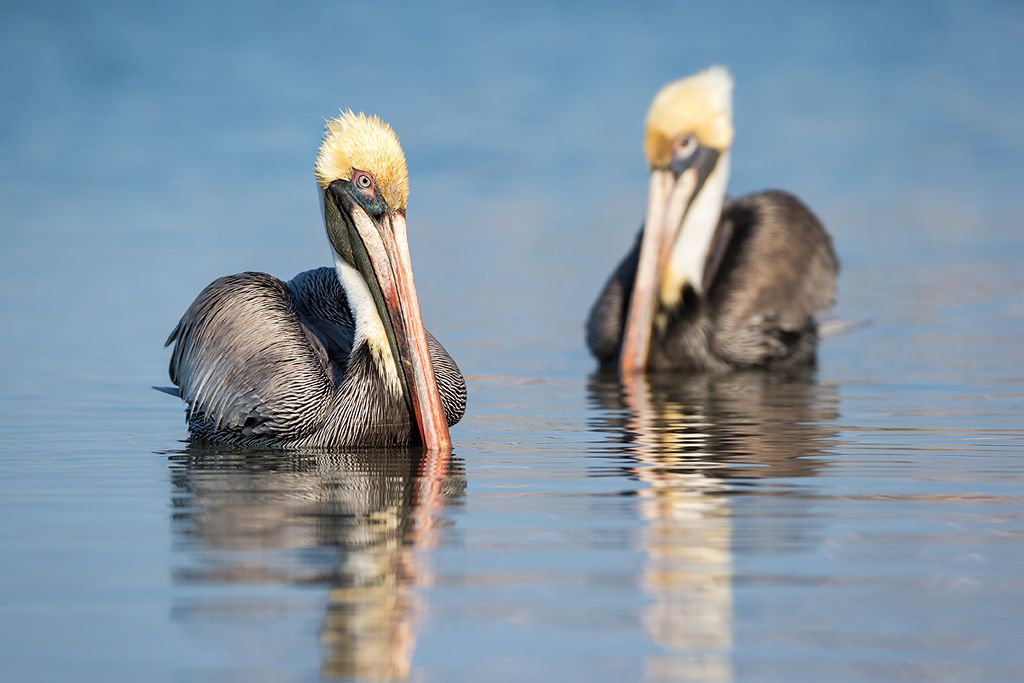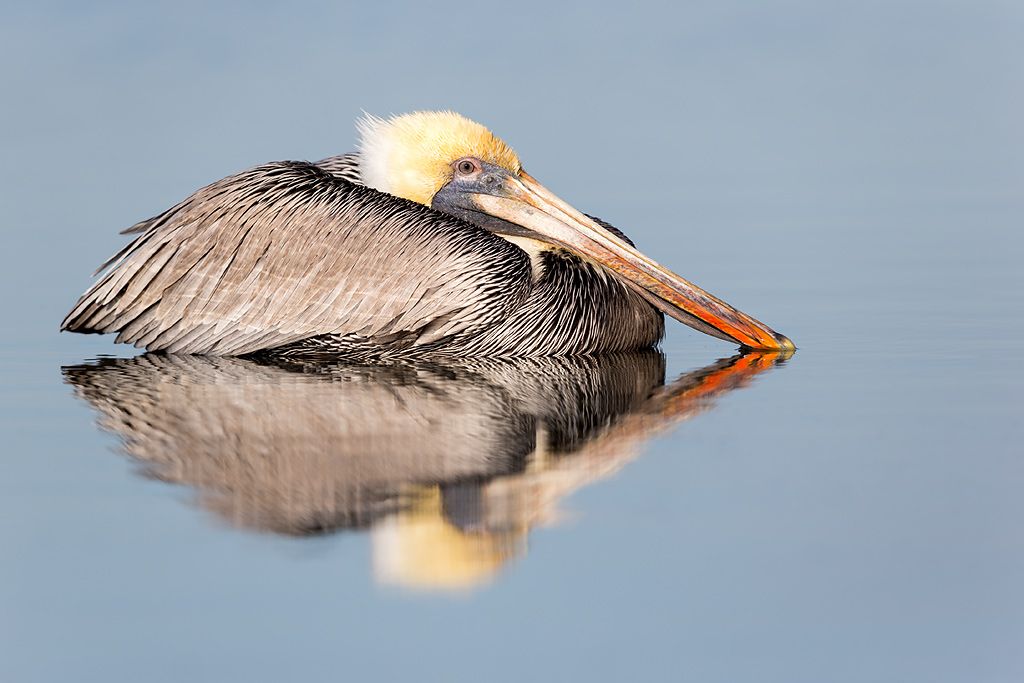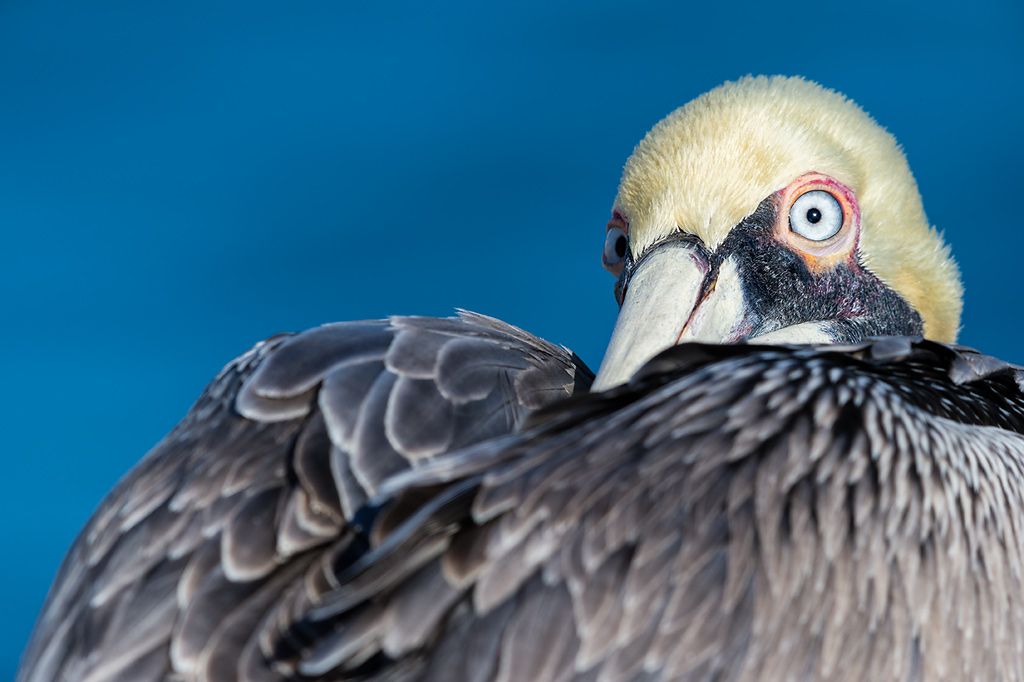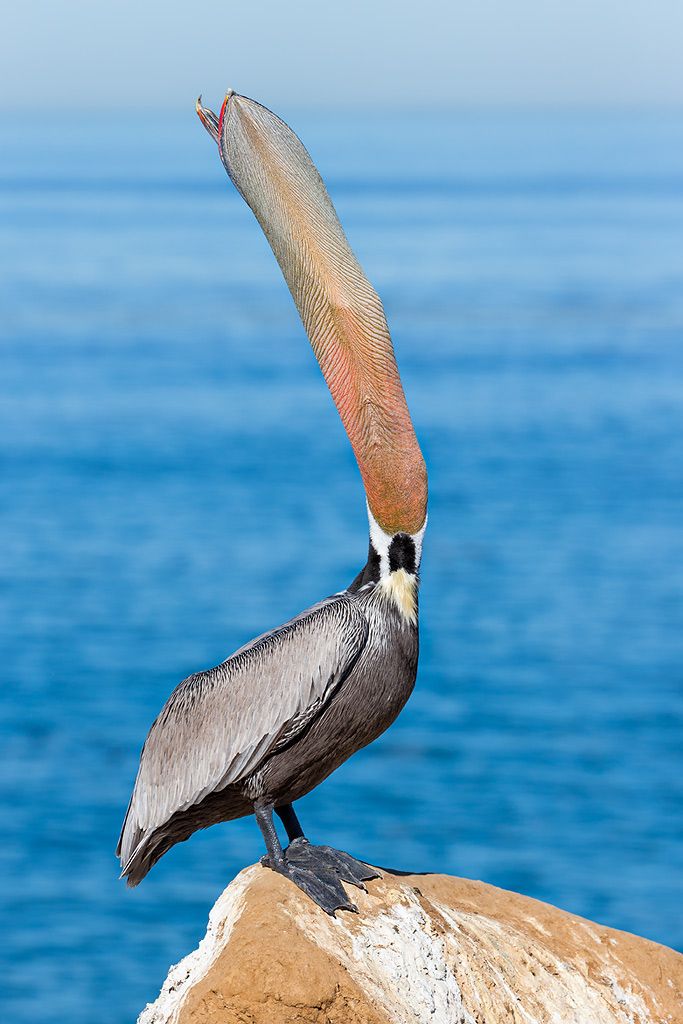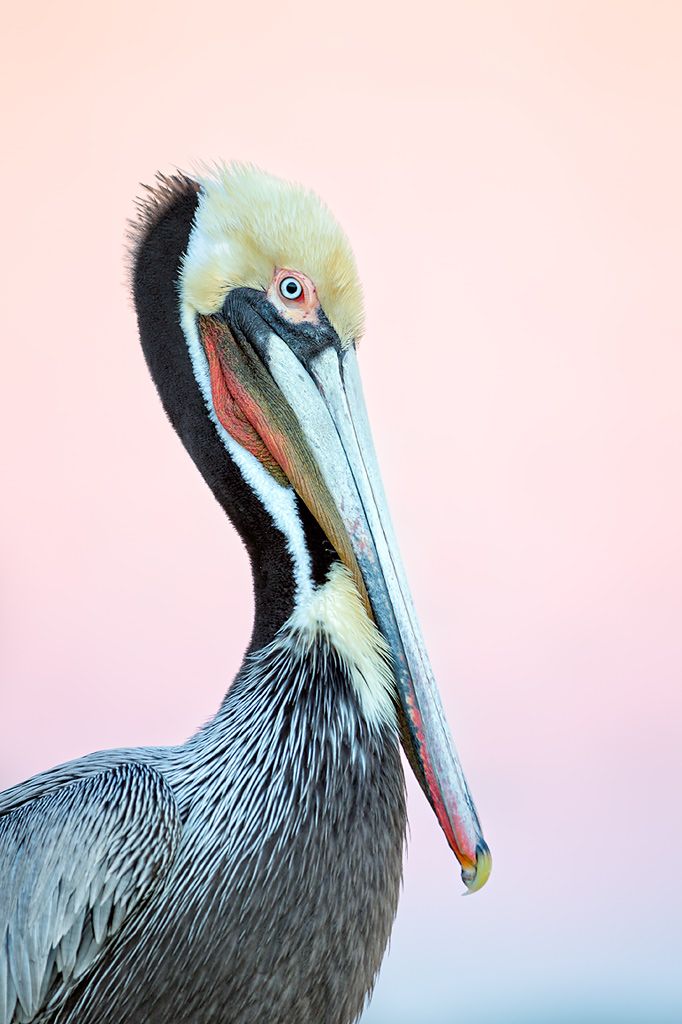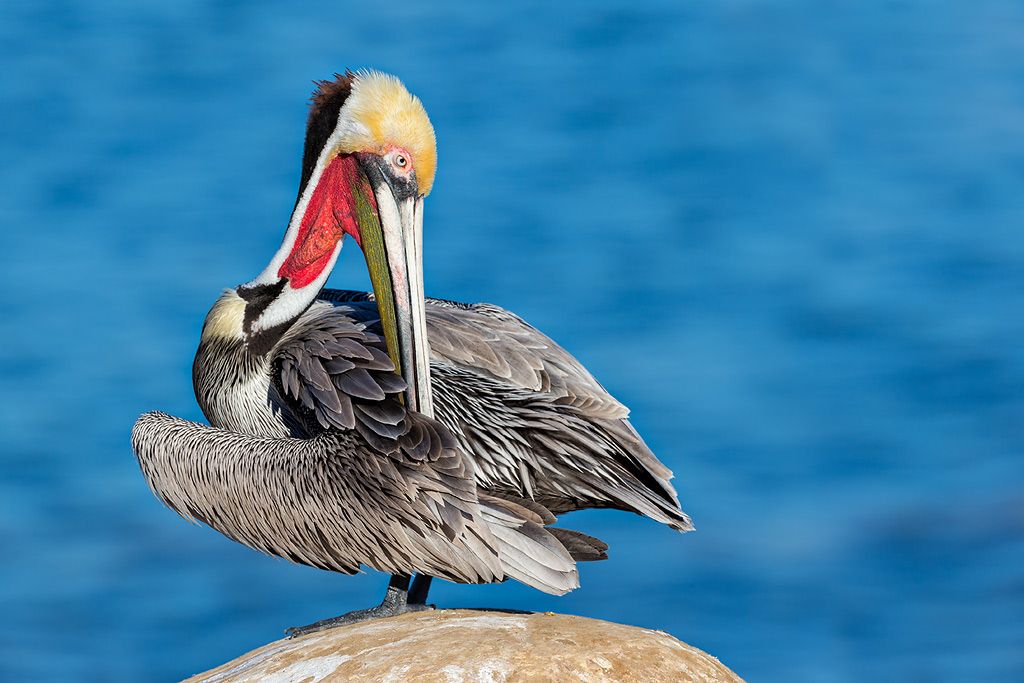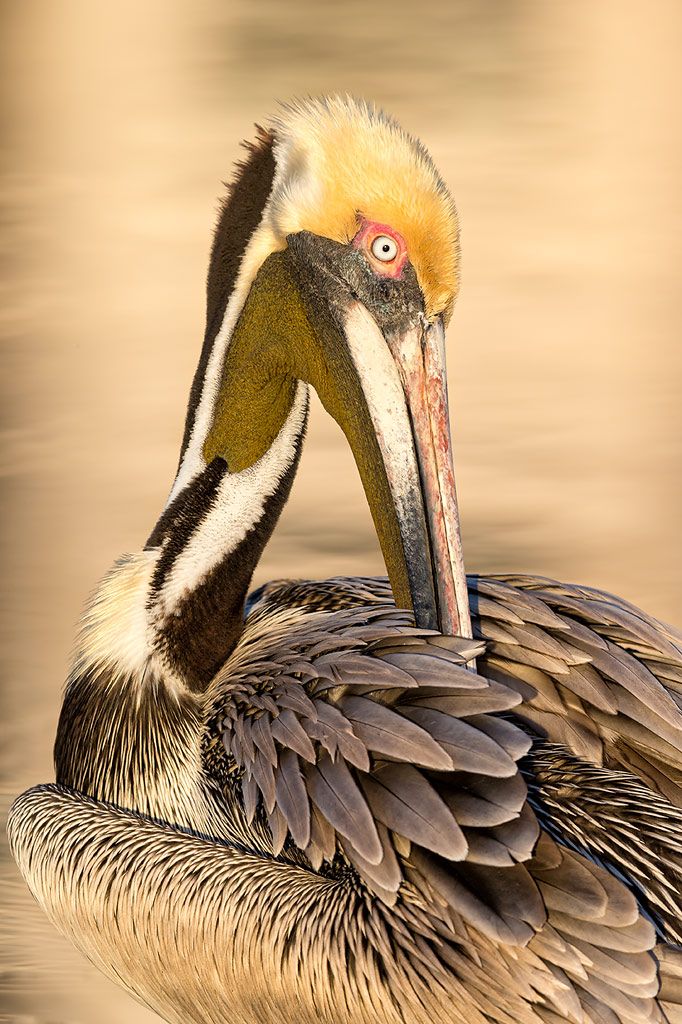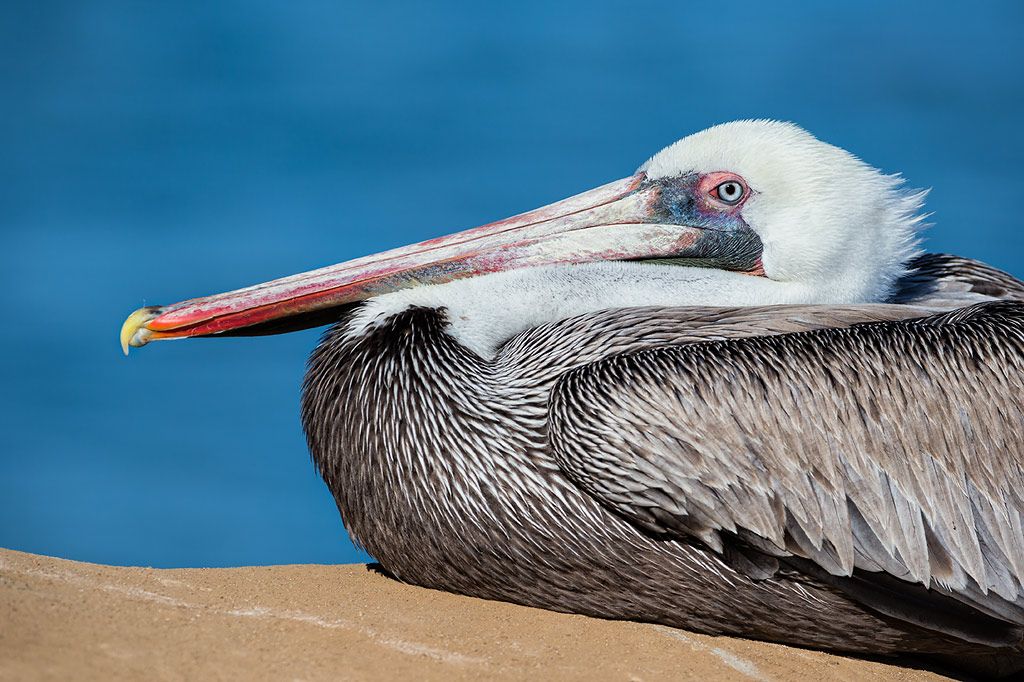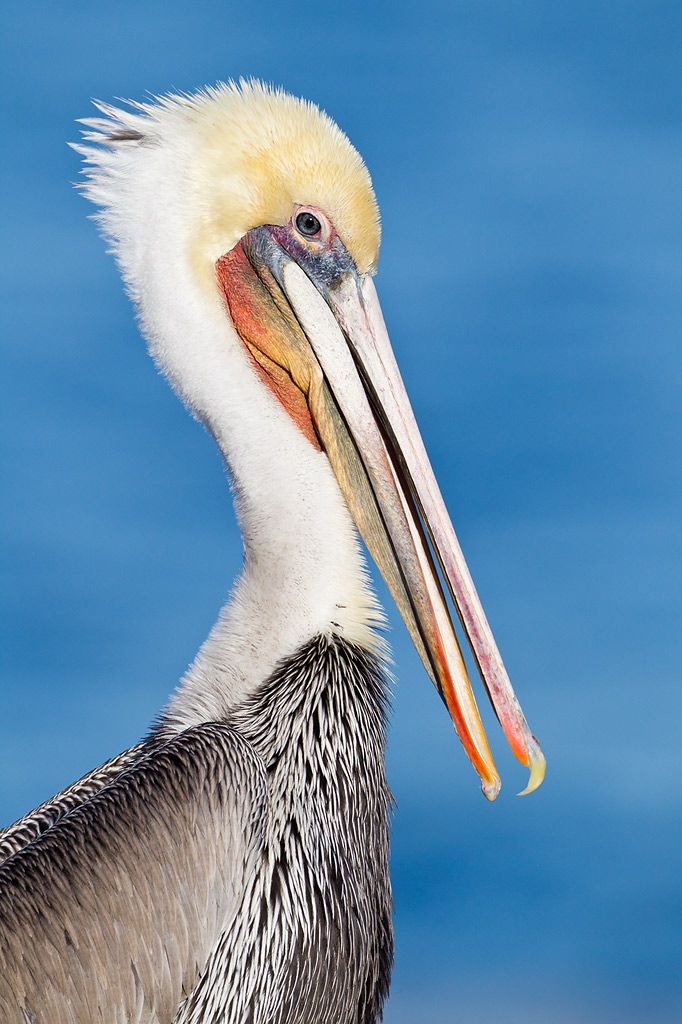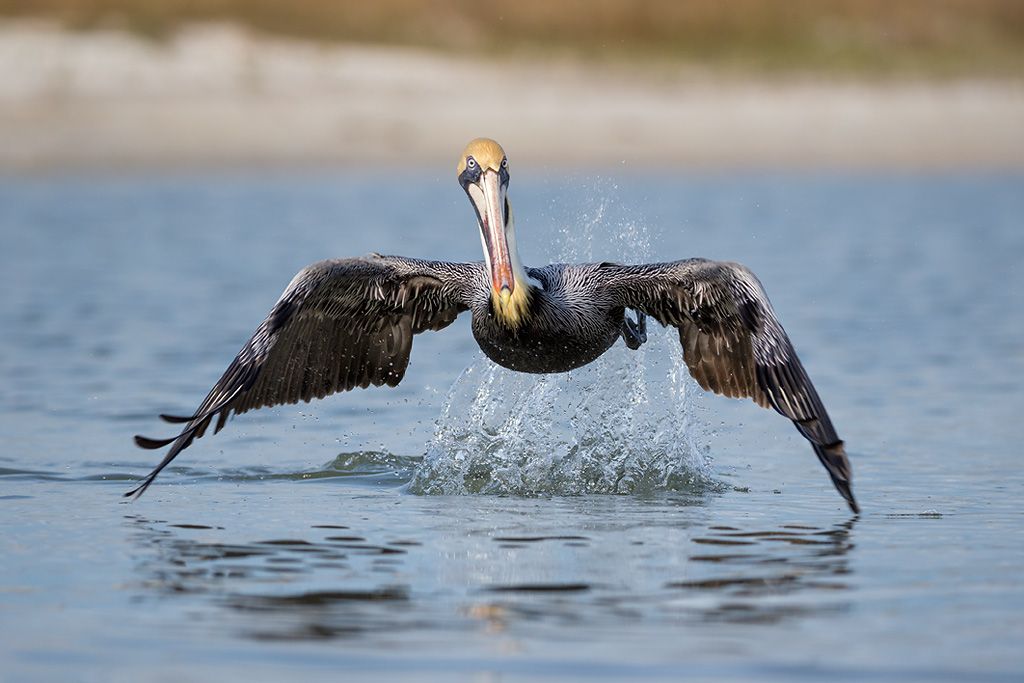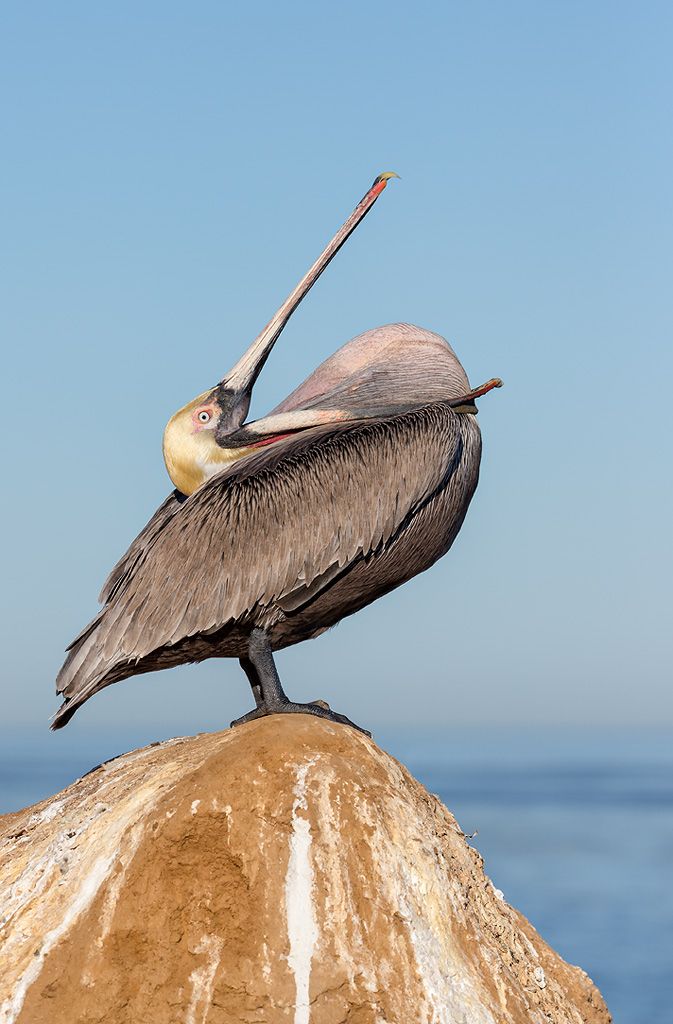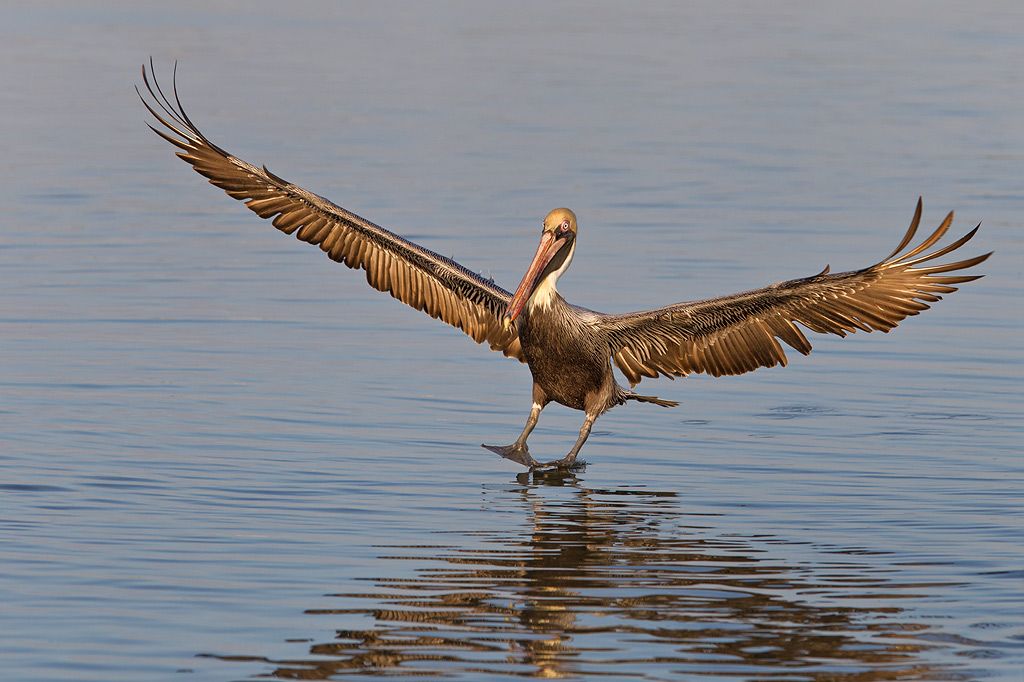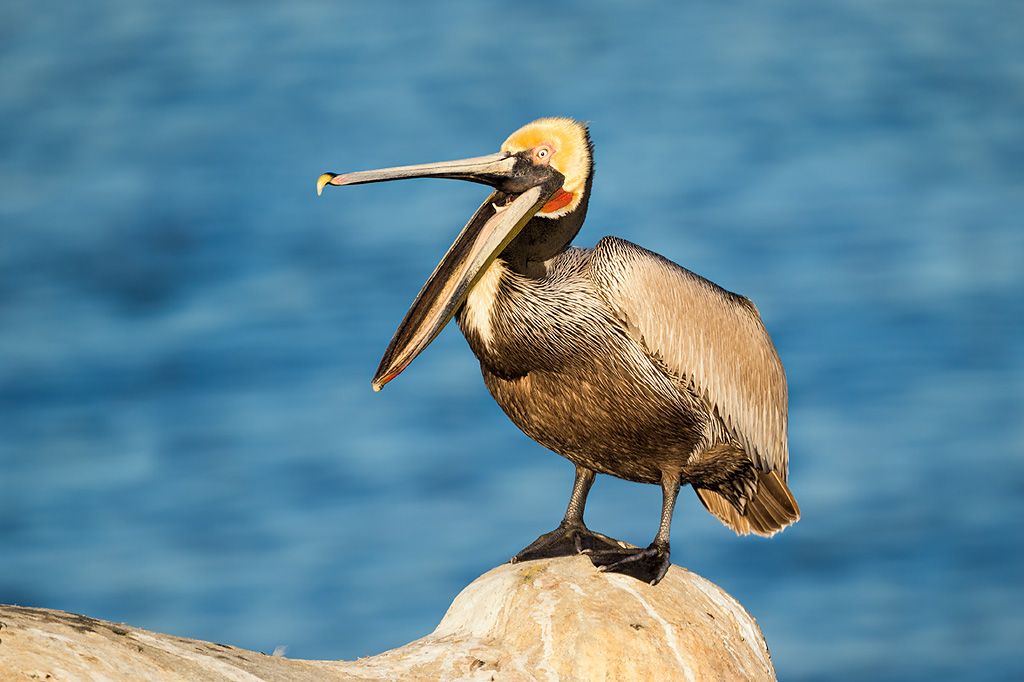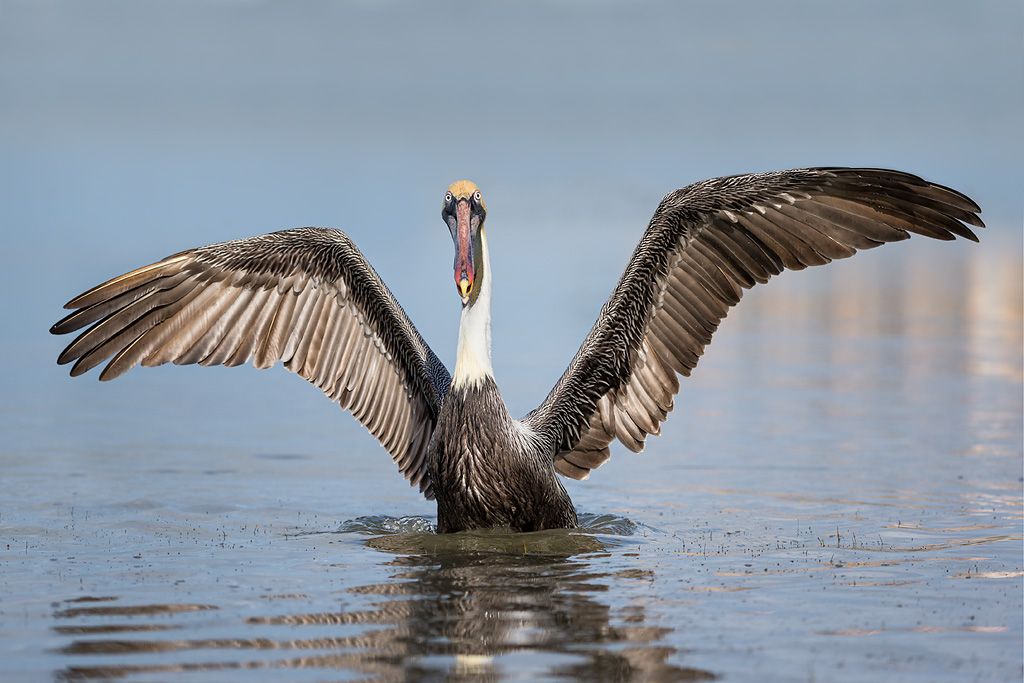Pelicans are large birds that do not particularly look special when you see them along the coast. They tend to blend in easily with the coastal environment, and seem to hang out near fishing piers, shipping channels and marinas hoping to snatch up some fish left behind by fisherman. Although they are quite sizable birds, they never really draw much attention while sitting on top of mooring poles near bridges and inlets. They are quite abundant in numbers, which makes it hard to believe that they were severely threatened some decades ago.
The Brown pelican nearly disappeared from the North American landscape during the late 1950s and early 1970s. The abundant use of pesticides that ended up in the food chain nearly wiped out the complete population. In 1970 the brown pelican was added to the endangered species list in the US, which eventually led to a ban on the use of DDT in 1972. Since the mid 1980s the pelican population has increased in numbers again and reached pre-pesticide numbers by the late 1990s. When they were fully delisted in 2009, the Deepwater Horizon oil spill threatened the Gulf Coast pelican populations again. As with many species, human intervention is ultimately responsible for the decline in numbers. It has been estimated that more than 700 adult and immature pelicans die each year in Florida alone from entanglement in sport-fishing gear.

